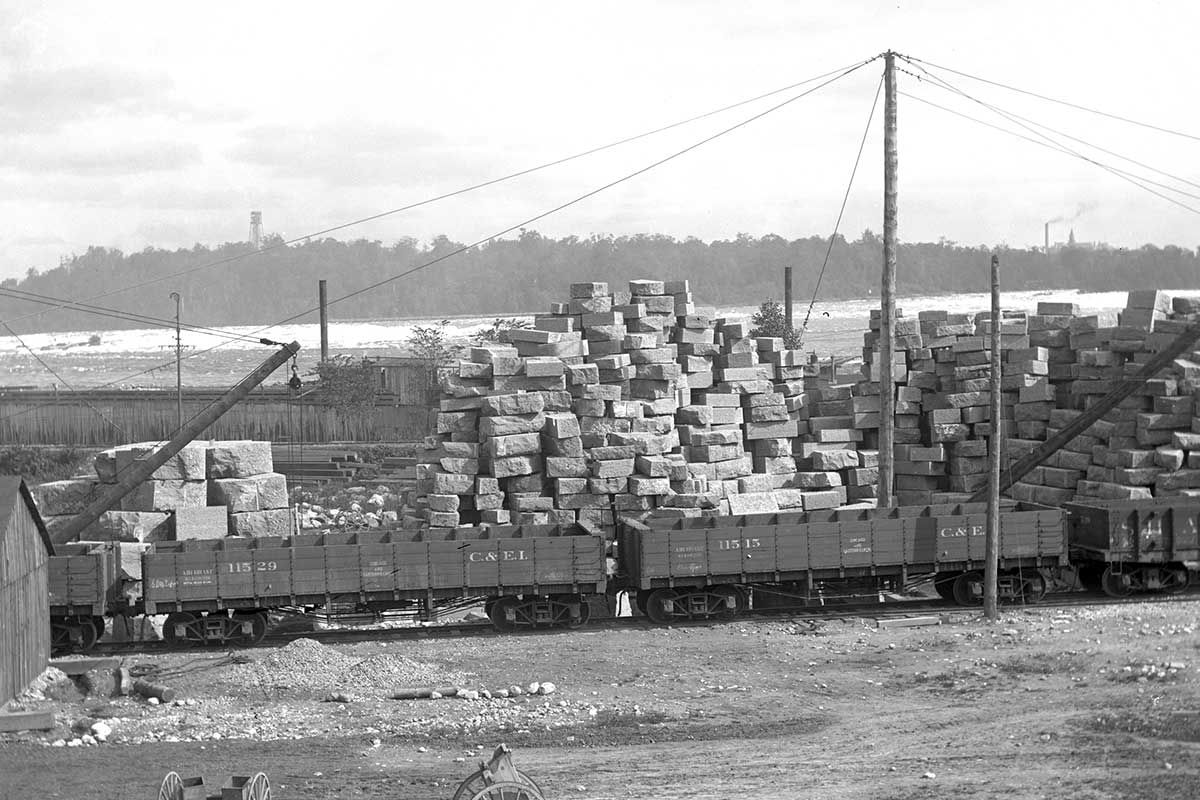Building Materials
Stone, brick and cast iron were primarily used in the plant’s construction with integrated steelwork throughout. The powerhouse and transformer station were designed to be practically fireproof. What other materials were used in the building of the power station?
Asbestos Lumber
Where: Oil switches
Asbestos lumber was used as another fire safety measure within the plant’s oil switches. It makes a good firestop and was used to line the interior boxes of the oil switches, where there was a higher risk of spark.
Rubber
Where: AC electrical lines
Rubber was used as an insulator for the plant’s AC electrical lines because of its large stretch ratio and high resilience. Rubber was ideal for encapsulating copper wiring because it allowed for electrons from the copper to travel freely without escaping.
Marble
Where: Control panel, upper level walls and floors
The use of marble throughout the plant was a way to convey that electricity was a safe and trustworthy business. Electricity was a newer industry and the company wanted people to feel confident in investing in it. Incorporating more lavish finishes was a way to get the public to not only buy into the company, but also the radical new concept of hydroelectricity itself.
Enamelled Bricks
Where: Tailrace tunnel
Enamelled brick has a glass-like coating that is hardwearing and does not allow for the accumulation of more than a sludge on its surface. In the tailrace tunnel, enamelled brick allowed water to pass more smoothly without wearing down the brick’s face.
Granite
Where: Tailrace tunnel
Granite was used at the end of the tailrace tunnel because of the stone’s low water absorption and high wear resistance. These properties made the last 17 feet of the tunnel less likely to be damaged by the plant’s spent waters consistently passing through it. Granite was also used to camouflage the tunnel’s exit into the natural landscape of the Niagara Gorge.
Cast iron
Where: Doors, window frames
Cast iron is durable, supresses vibrations and offers more compression strength than steel. It was used as a cornice above the upper level doors and around window frames.



